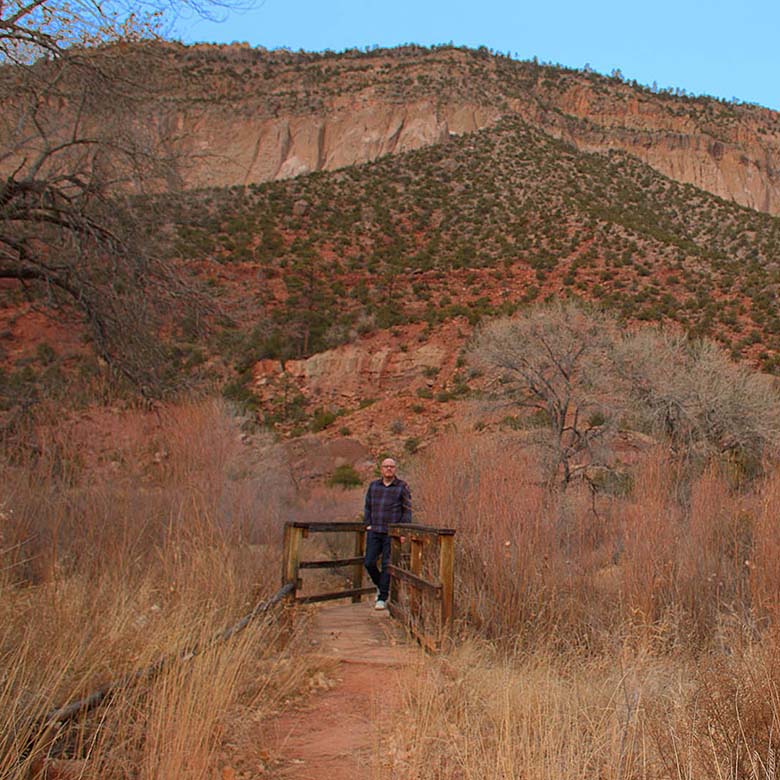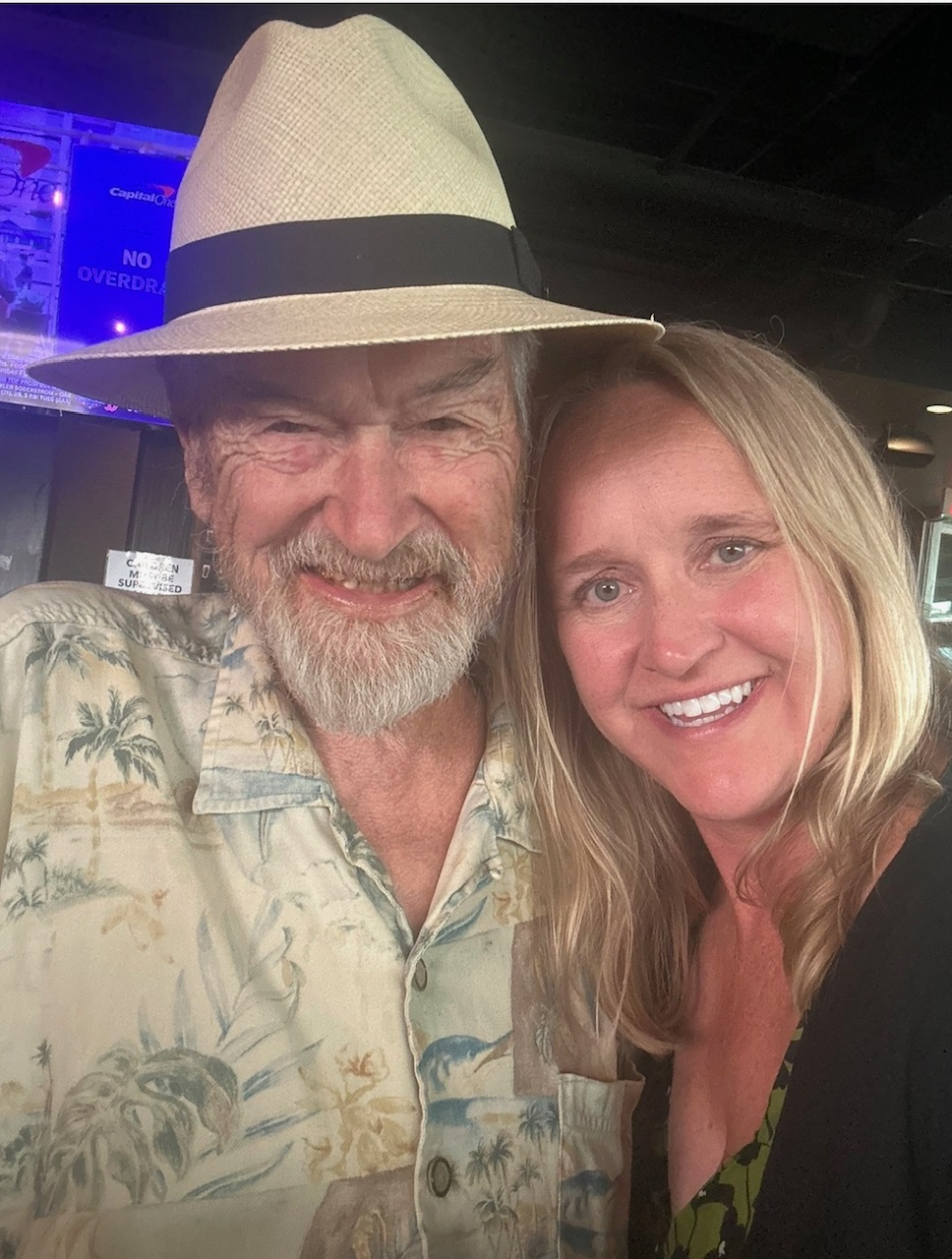
Emotional Imprints: Celebrating Life and Saying Goodbye
The image you see is of myself and a magical man taken just a few years ago. This is Jim and he is my dearest friend’s father who passed away just a few short months ago. Something I know of Jim – He cared in the way he knew how for his friends and family. I know Jim had his faults – as we all do – but I knew him as a man of wit and wisdom who was always gracious to me and present in our conversations. Jim was a charming and debonair man who left an emotional imprint on my life and for that, I am forever grateful.
In the grand tapestry of life, moments of connection leave the deepest imprints on our hearts. Maya Angelou’s words resonate profoundly: “I’ve learned that people will forget what you said, people will forget what you did, but people will never forget how you made them feel.” As we journey through life, we encounter countless opportunities to uplift, support, and cherish those around us. These moments, whether brief or enduring, become part of the fabric of our relationships and our collective memory.
On Friday, I – alongside Jim’s daughter and my confidant, and many other friends and family – celebrated Jim’s life and said Farewell Good and Faithful Servant for now. Celebrating life and saying goodbye are two sides of the same coin, aren’t they? Whether we are rejoicing in a milestone or mourning a loss, the essence of our presence matters. In times of joy, our laughter, encouragement, and shared stories build bonds that transcend time. In moments of sorrow, our gentle words, warm embraces, and silent companionship offer solace that lingers long after words have faded.
When we celebrate life, we do more than mark a moment; we affirm the value of relationships and shared experiences. The warmth of a heartfelt conversation, the comfort of a reassuring touch, and the simple act of listening—all of these create a lasting legacy of love. Whether through acts of kindness or words of affirmation, we etch emotional imprints into the hearts of those we cherish.
Goodbyes, though often painful, hold profound significance. When we part ways—whether due to distance, change, or the finality of death—we carry forward the essence of those connections. Rituals, shared memories, and expressions of gratitude allow us to honor the past while embracing the future. Saying goodbye is not merely an end; it is an acknowledgment of the love and meaning that has been shared.
Maya Angelou’s wisdom reminds us that our greatest legacy is not in our accomplishments but is how we made others feel. The joy we impart, the compassion we extend, and the love we share become the echoes of our presence in the lives of others. Each moment of connection, however fleeting, leaves an imprint that transcends time.
As we navigate the complexities of life and loss, may we always remember the power of connection—the unseen threads that bind us together in love, memory, and meaning.
Today, I celebrate the imprint of Jim on my life and on so many…
Learn More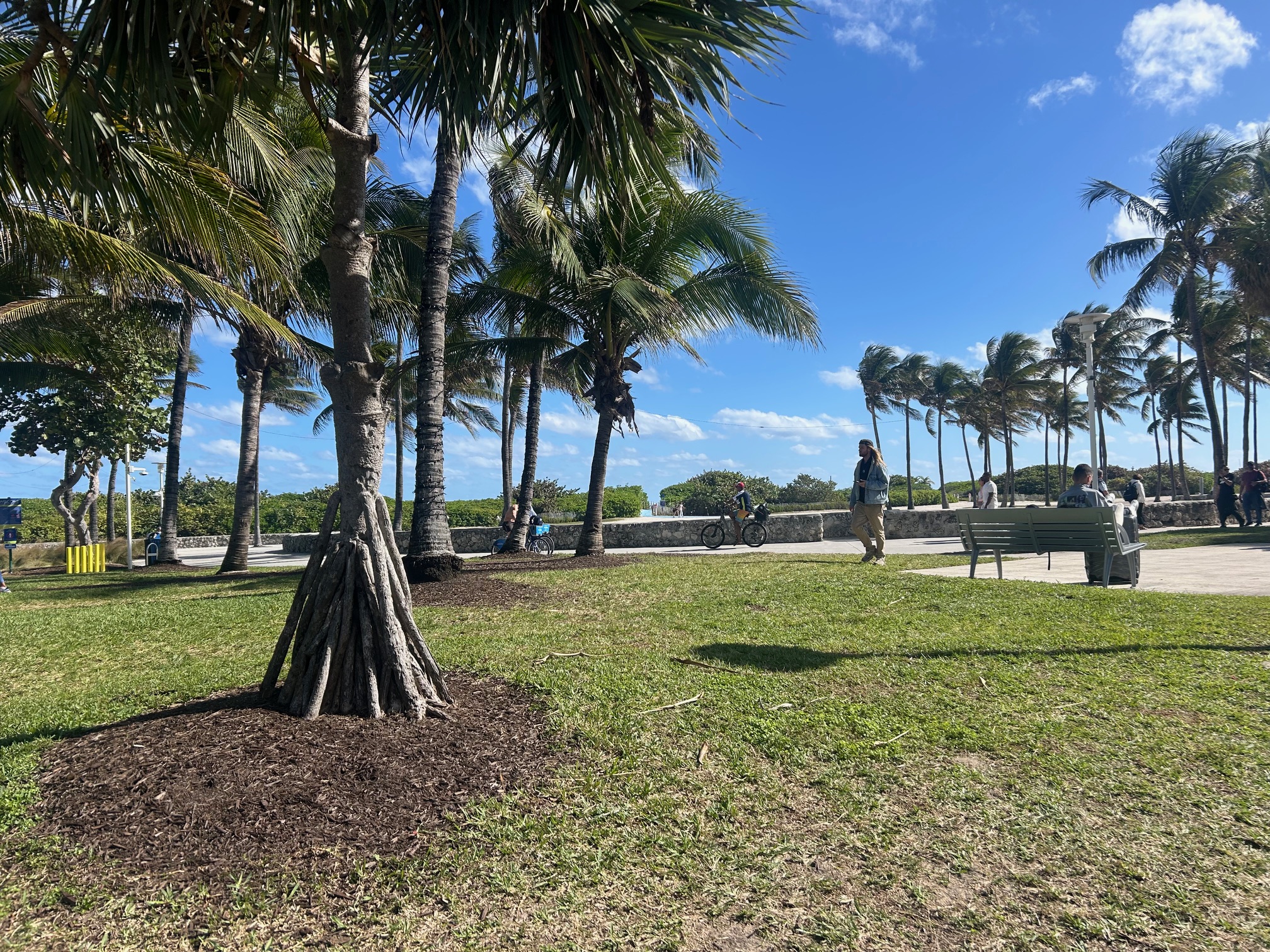
All Things Borrowed…
It was recently pointed out to me, that all things having to do with Jesus and his entry into the city on that blessed day that we now celebrate as Palm Sunday, were borrowed – nothing personally owned or ceremoniously presented to Jesus, simply borrowed. I have given this simple fact pause over the past few days as we enter communally into this sacred time.
As we all know, Palm Sunday isn’t just the beginning of Holy Week—it’s the beginning of the end and the beginning of the beginning. A strange hinge in time – so much of this moment is borrowed.
When Jesus approaches Jerusalem in Luke 19:28–40, he doesn’t ride in with the grandeur of a king. Instead, he borrows a colt – not a full-grown donkey, but a colt. Not a war horse; not a chariot; but a colt – A young donkey. Humble, unridden, and unremarkable—except for the One riding it. It’s as if Jesus is saying: Even the smallest, the least-used, the borrowed, can carry weight – metaphorically and literally.
And then the cloaks – No saddle; No regalia; Just cloaks—borrowed layers from the backs of people who probably didn’t have many to spare. They lined the colt, then the road. Their personal covering became the path for their Savior. It’s a quiet surrender. The people give what they have, not knowing how quickly crowds can change their cries from
“Hosanna” to “Crucify.”
Though Luke 19 ends in triumph, we know what lies ahead – we know where this story goes. And let us not forget that the most borrowed thing of all is the cross. Jesus carries it and he dies on it.
A borrowed colt and borrowed cloaks and a borrowed cross. And somewhere in that tangled web of humility, surrender, and sacrifice—we are each invited in. To lay down what we carry. To offer all we have. To remember that the most eternal moments often begin with something borrowed.
This Palm Sunday, may we not only wave our branches but also surrender our cloaks. May we remember the borrowed cross and celebrate this humble beginning.
Blessings to you on this journey,
Rev. Dr. Kelly Jackson Brooks, LPCC
Executive Director
Learn More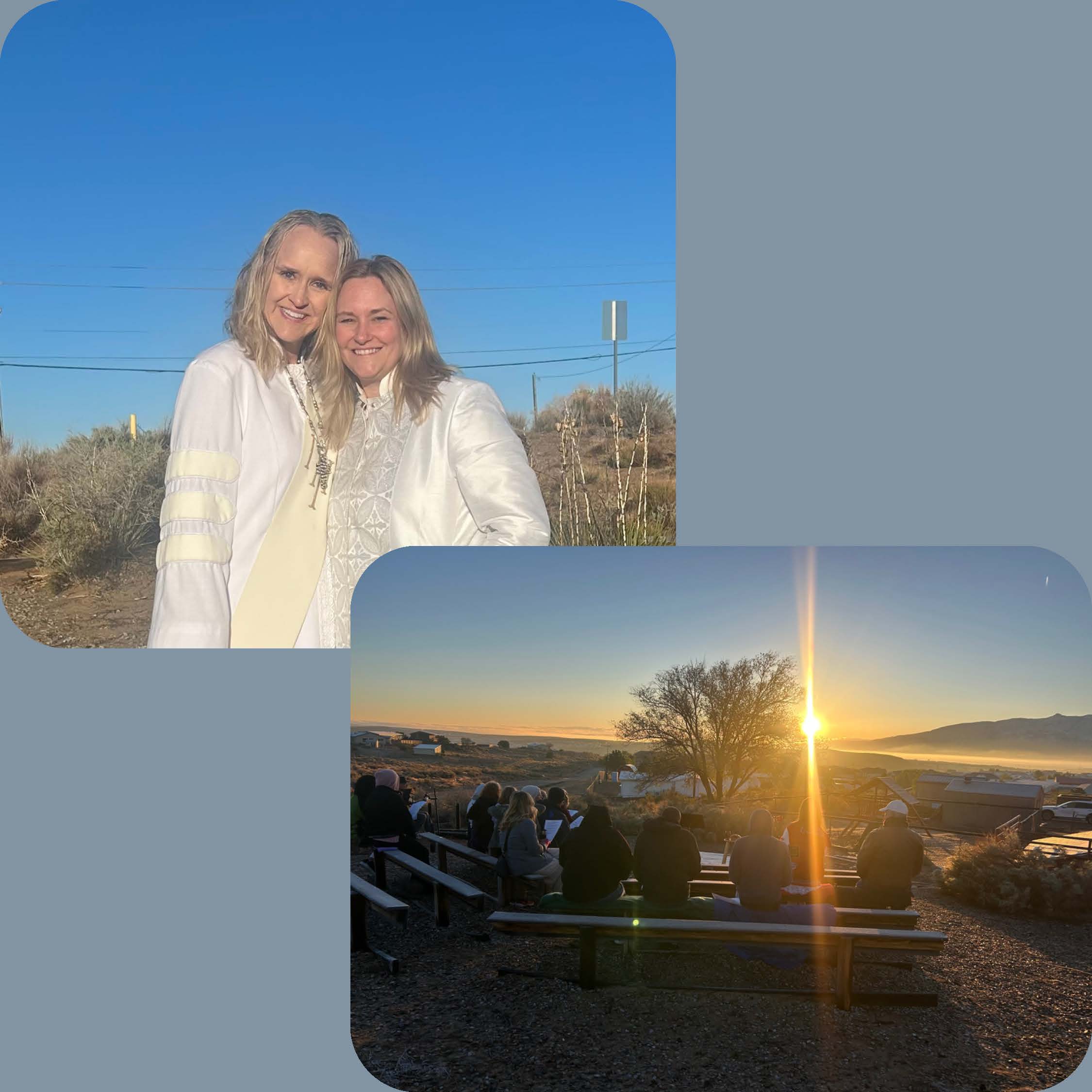
Friendships and the Sunrise: Light for Today’s World
On Easter morning, I had the great pleasure of standing and serving communion with a dear friend and colleague. You see, my friend invited me to assist her during the Easter Sunrise Service at the church she serves and I attend with my daughter. Any yes, there were tears of joy to be invited and to share in this Holy Sighting – What a perfect way to start the Easter celebration!
There’s something timeless about gathering in the early morning darkness, waiting together for the first light to break across the horizon. It’s quiet, expectant. The world is still, and in that stillness, we’re reminded that some things—like the sunrise—never stop showing up, no matter how heavy the night has been.
Sunrise services have long been a tradition in the Christian faith, often held on Easter morning as a way to celebrate resurrection, renewal, and hope. But in today’s world, these early gatherings speak to more than just ancient tradition—they speak to our need for connection, presence, and light in every form it comes.
One of the most powerful things about a sunrise service isn’t just the rising sun itself. It’s who you’re standing with while you wait for it.
In a time when life can feel fragmented—our days split between emails and errands, social media and strained schedules—the chance to come together in the quiet with others is a gift. It’s a reminder that we are not alone. That even as the world spins with uncertainty, there are constants we can count on: the turning of the earth, the slow, sure spread of light, and the steady presence of friends.
Friendships, like the sunrise, are often made up of small, quiet, and Holy moments. A text that says, “thinking of you.” A cup of coffee shared before the day begins. A hand held in silence when words fall short. These moments may not make headlines, but they are the moments that hold us together.
In today’s world, friendship might be one of the most radical things we can practice. True friendship—the kind that listens without fixing, stays without needing answers, and walks with you in the dark—is both rare and revolutionary. It’s a form of resistance against loneliness, fear, and the rush to produce and perform.
And so, the sunrise service becomes more than a tradition. It becomes a metaphor, a lived experience, and a gentle protest against despair. It says, “We are still here. We are still rising. And we are not doing it alone.”
As the sky shifts from shadow to light, we’re reminded that hope isn’t always loud or flashy. Sometimes it just looks like a few people standing side by side, watching the sun come up, and believing—together—that the light is worth waiting for.
Learn More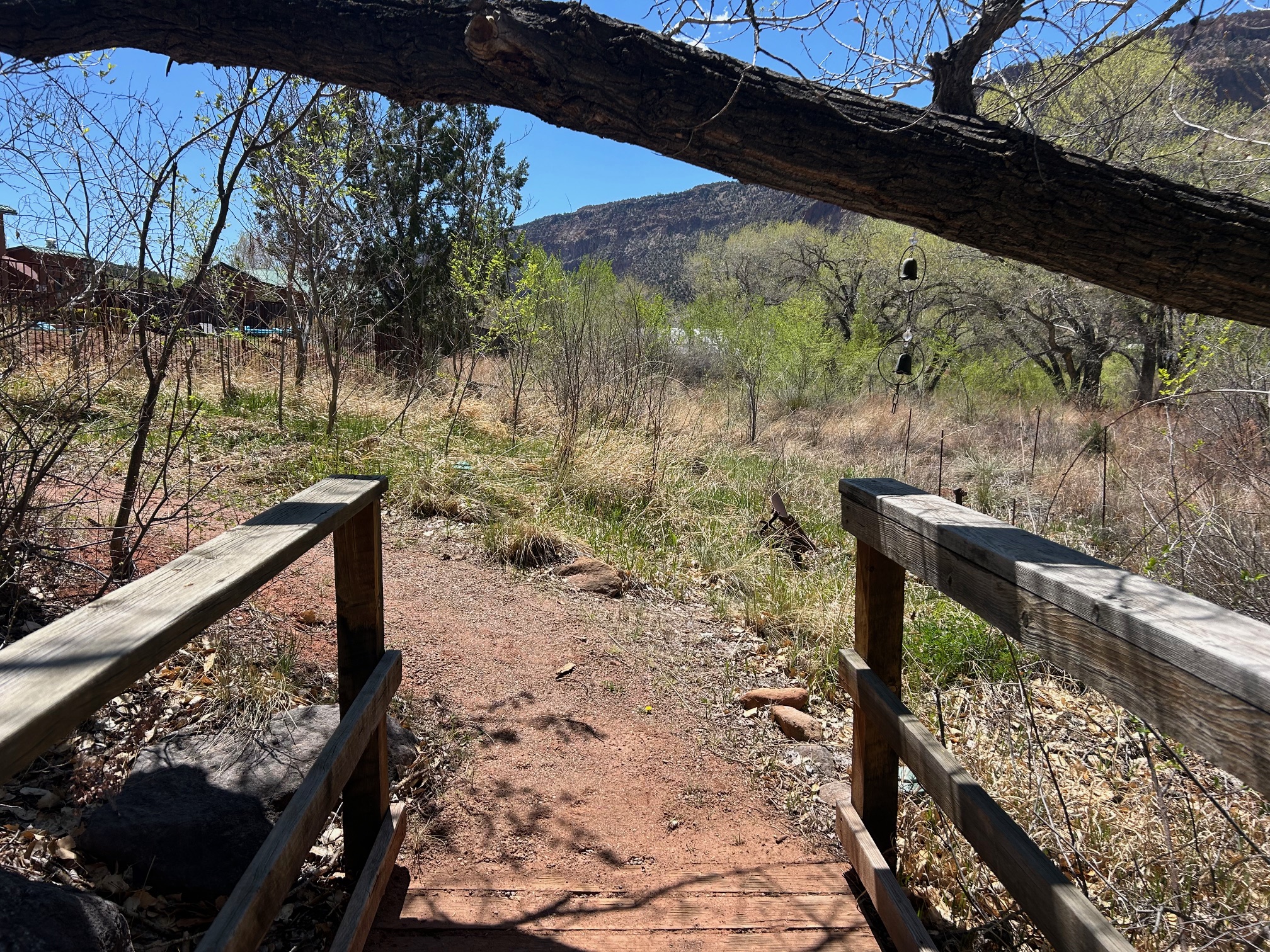
Asking the Right Question: What is The Why?
In a world that moves faster every day, we are constantly bombarded with decisions, distractions, and demands. It’s easy to fall into the trap of reacting rather than reflecting. We ask, What should I do next? How do I get this done faster? Who needs to be involved?—all valid questions. But sometimes, they aren’t the right questions.
The most transformative question we can ask in any conversation is this: What is the why?
Why takes us beneath the surface. It uncovers purpose. It challenges assumptions. It brings clarity when the path ahead feels foggy or overwhelming. Without a clear why, even our best efforts can feel hollow or misdirected. With it, our actions align with a deeper mission—and that changes everything!
When we pause and ask What is the why?, a few powerful things happen:
- We find focus. Instead of chasing every opportunity or making hap-hazard assumptions, we begin to discern what truly matters.
- We inspire others. A clear purpose is contagious. When people understand the why, they are far more likely to rally around it.
- We endure challenges. When storms come – and they will – purpose and knowing the why is what keeps us anchored.
- We measure success differently. Achievement isn’t just about reaching a goal; it’s about staying true to the reason we set out in the first place.
In your personal life, your work, your faith, your relationships—whatever the arena—the why shapes the how and the what.
Maybe today you’re at a crossroads. Or maybe you’re just feeling the low-grade exhaustion that comes from doing a lot without a clear sense of meaning. Either way, it’s a good time to stop and ask: What is the why?
You might be surprised by how much shifts when you start from there!
Learn More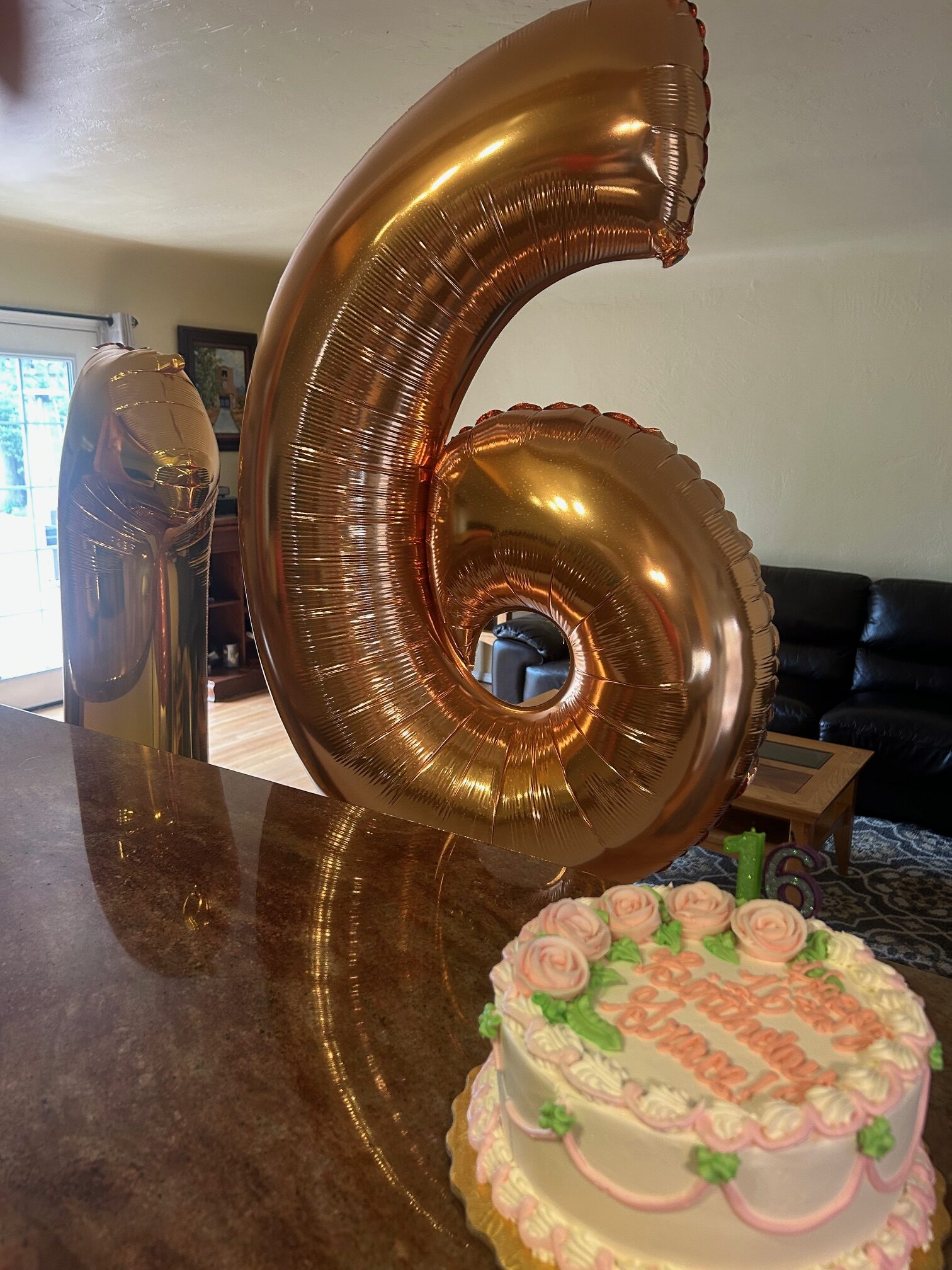
May: A Month of Expectations, Hope, and Celebrations!
There’s something about May that stirs my soul – In my home, we celebrate May Day, my daughter’s birthday (16th this year!), my mother’s birthday (she would not appreciate it if I shared this specific detail!), and Mother’s Day! This is a season that the world around each of us seems to exhale—so many celebrations, trees stretching into fullness, flowers opening with purpose, sunlight lingering a little longer each evening. And after months of gray skies and bare branches, May feels like a reward. A promise fulfilled. A sacred pause between what has been and what is still to come.
May is truly the month of expectations and hope.
Graduations fill calendars, celebrating the end of one chapter and the anticipation of another. Gardens bloom not just with beauty but with the silent assurance that growth happens—sometimes slowly, sometimes unseen, but always on its way. In many communities, May is a time of transitions: confirmations, weddings, retirements, farewells, and new beginnings.
It’s also Mental Health Awareness Month, an intentional time to name what we often carry quietly. It’s a call to honor the deep and holy work of healing. To listen well. To de-stigmatize struggle. To remind ourselves and others that tending to our mental health is not weakness—it is wisdom, and it is vital.
This May, we also celebrate a special milestone: the 5th birthday of Chrysalis Counseling for Clergy! For five years, Chrysalis has been a safe space for those in ministry to process, breathe, grieve, and grow. It has walked alongside clergy through transition, trauma, discernment, and deep transformation. The work done there is sacred. And it too, is a testament to hope—a reminder that even in the most fragile seasons, something new can emerge.
Scripture reminds us:
“Forget the former things; do not dwell on the past. See, I am doing a new thing! Now it springs up; do you not perceive it?” —Isaiah 43:18–19
Indeed, new things are happening —sometimes in quiet ways, sometimes in bold ones – but always with love, and always with hope.
If you or someone you know is in ministry and needs a place to rest, reflect, and renew, consider connecting with Chrysalis Counseling for Clergy. Visit www.ChrysalisCounselingForClergy.org to learn more or offer support. Your prayers, referrals, and encouragement help sustain this vital ministry.
So, let us live into this month with open hearts and expectant spirits. Let us plant kindness, nurture faith, and water our dreams. Let us care well for one another—and for ourselves – because in May, the ground is fertile—not just with flowers and fields, but with possibility, with healing, and with hope.
Learn More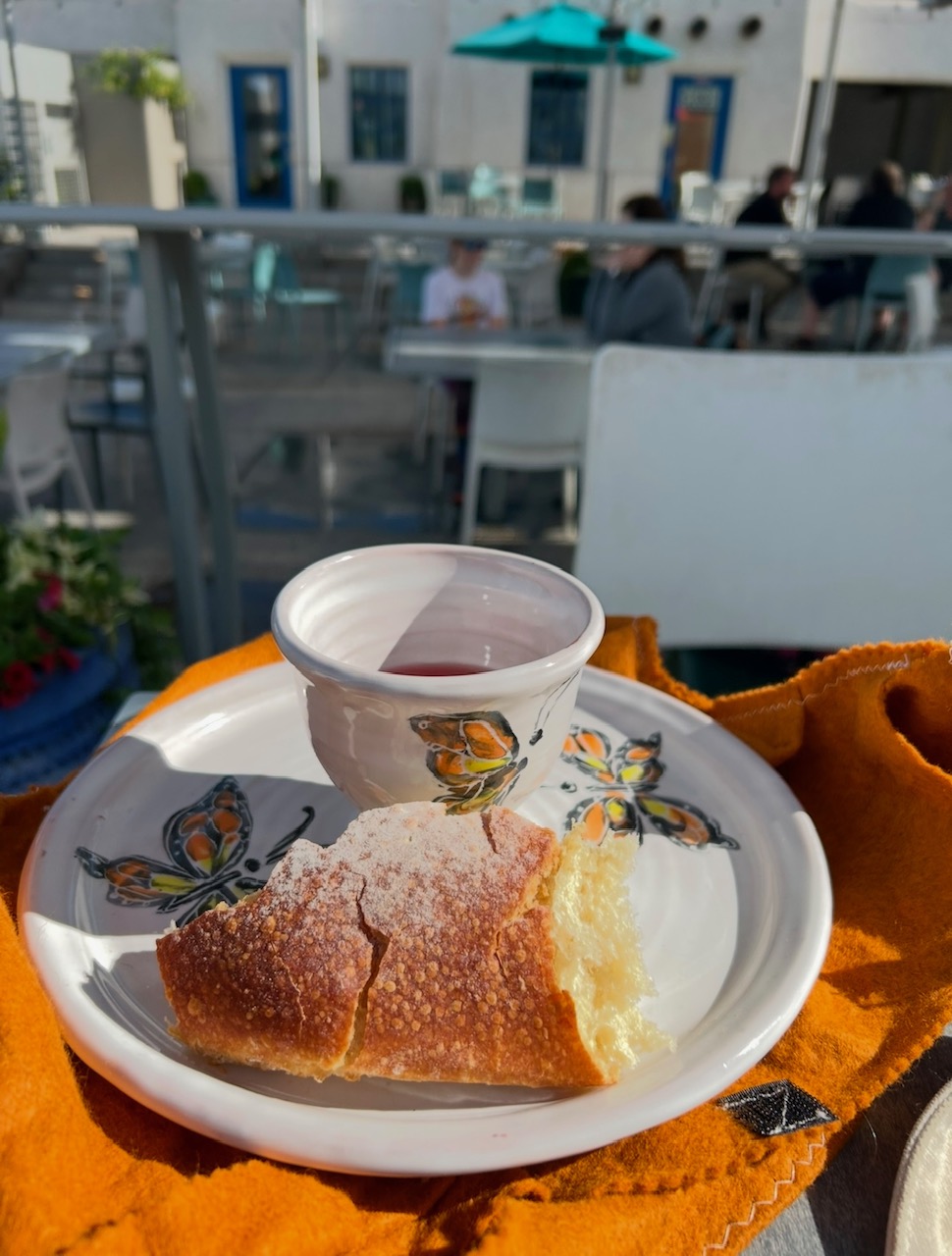
To Celebrate or to Sit?
Have you ever been privy to a conversation or message where you can literally only remember one phrase or comment shared? I had that moment today as I sat passively during worship and the comment and question posed was this: “Do you celebrate restoration in the here and now or do you sit in resentment in the past?”
I have always taken myself to be a forward-thinking person, but I admit, I do not always consider those things I hold onto from the past. I recognize that all that we have experienced communally and as individuals form how we present ourselves and live out our day’s but, I am admittedly not always good at sitting with and taking the time to heal and restore old wounds – both which I have inflected and those I carry from others.
Restoration is one of the most beautiful themes in Scripture. Time and again, God takes what is broken and makes it whole, what is lost and brings it back, what is wounded and breathes new life into it. Yet, despite this divine pattern of renewal, we often struggle with how to respond when restoration happens—not just in our own lives, but especially in the lives of others.
Consider the parable of the Prodigal Son. The younger son takes his inheritance, squanders it, and returns home expecting rejection. Instead, he is met with a father’s embrace, a robe, a ring, and a feast. Restoration and grace is at the heart of this story. But standing just outside the celebration is the older brother—resentful, frustrated, unwilling to rejoice in his brother’s return. His heart is wrapped in bitterness, unable to join in the joy of redemption.
How often do we find ourselves in the same position? When someone we deem unworthy receives grace, do we celebrate or do we grumble? When someone is lifted up after a fall, do we rejoice or do we resent? The human heart is prone to comparison, and comparison can quickly breed resentment when we feel overlooked, underappreciated, or more deserving than another.
The truth is , we don’t earn restoration or grace —it is a gift freely given. And if we truly believe in the power of restoration, then we must be willing to celebrate it, even when it happens to those we least expect or those we struggle to forgive.
Perhaps resentment is a signal, not just of our disappointment, but of a deeper need within us—to know that we, too, are seen, valued, and loved. The good news is that in God’s economy, restoration is never in short supply. There is enough grace for the prodigal and the elder son. There is enough room at the feast for all.
So, the question remains: When we witness restoration and grace poured out for another, will we join the celebration? Or will we sit outside, arms crossed, missing the joy of what is happening?
May we choose to celebrate, to embrace grace, and to let go of resentment so that we can fully enter into a life of joy.
Learn More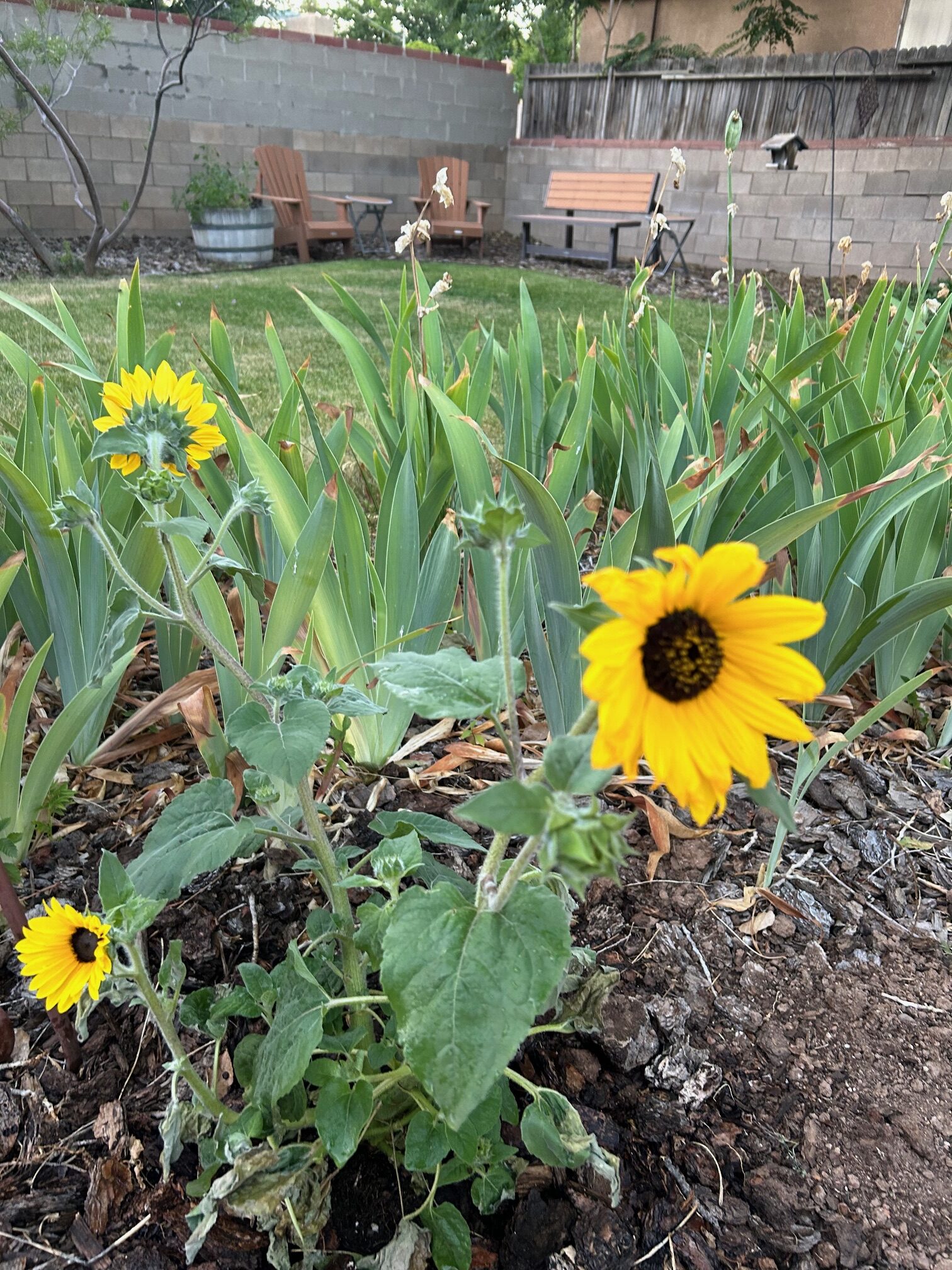
How Does Your Garden Grow: The Tale of the Fig Tree
There is something magical about this time of year. It’s the time where you see and hear your neighbors in their yards cleaning out debris left from the fall, and preparing for what flowers and foliage is peeking up and planned. The temperatures are rising, but it’s not yet unbearable to spend several hours deep in the soil or laying fresh mulch. I love the sounds of the birds and the many smells of the season – and regardless of what is happening on the evening news, mother nature seems to be unphased in her relentless reminders that spring is here.
In the Gospels, Jesus too speaks of the changes of the seasons and the need to be physically and spiritually prepared for what is to come. In church this morning, I was reminded of the story of the fig tree as a rich metaphor for these subtle shifts, nurturing of faith, one’s purpose, and spiritual preparedness and fruitfulness.
In Mark 11: 12-14, Jesus speaks to his encounter with a fig tree that bore no fruit. Finding it barren, Jesus cursed it, and it withered. On the surface, this passage can seem perplexing, even harsh. But beneath it lies a deeper truth: we are called to bear fruit in our spiritual lives. The fig tree was meant to nourish and sustain, and when it failed in its purpose, it became a lesson about living a life of true faith rather than mere appearances.
Another parable about the fig tree appears in Luke 13:6-9. In this story, a landowner comes looking for fruit on his fig tree and, finding none, contemplates cutting it down. The gardener intercedes, asking for more time to cultivate and care for the tree so that it might yet bear fruit. This passage speaks to God’s patience and grace, but also to our responsibility to respond to that grace. There comes a time when we must step into the purpose for which we were planted.
The fig tree is a symbol of peace and abundance. In the Old Testament, the fig tree often represents security and prosperity. Micah 4:4 envisions a time of peace when “everyone will sit under their own vine and under their own fig tree, and no one will make them afraid.” To be a fig tree is also to be a place of refuge and rest, offering shade and nourishment to those who come near.
The telling of the fig tree reminds us to embrace a life of faithfulness, growth, and provision. It is yet another means in which Jesus is speaking to us, telling us to recognize that our lives are meant to bear spiritual fruit—not just for ourselves, but for those around us. It is a call to readiness, to respond to God’s tending, and to step into a life that is abundant and full of purpose.
Ask yourself in this magical season of preparedness: Are we paying attention and bearing fruit? Are we offering shade and nourishment to those in need? Are we rooted deeply and prepared for the unknown of what is to come and what is right in front of us?
Learn More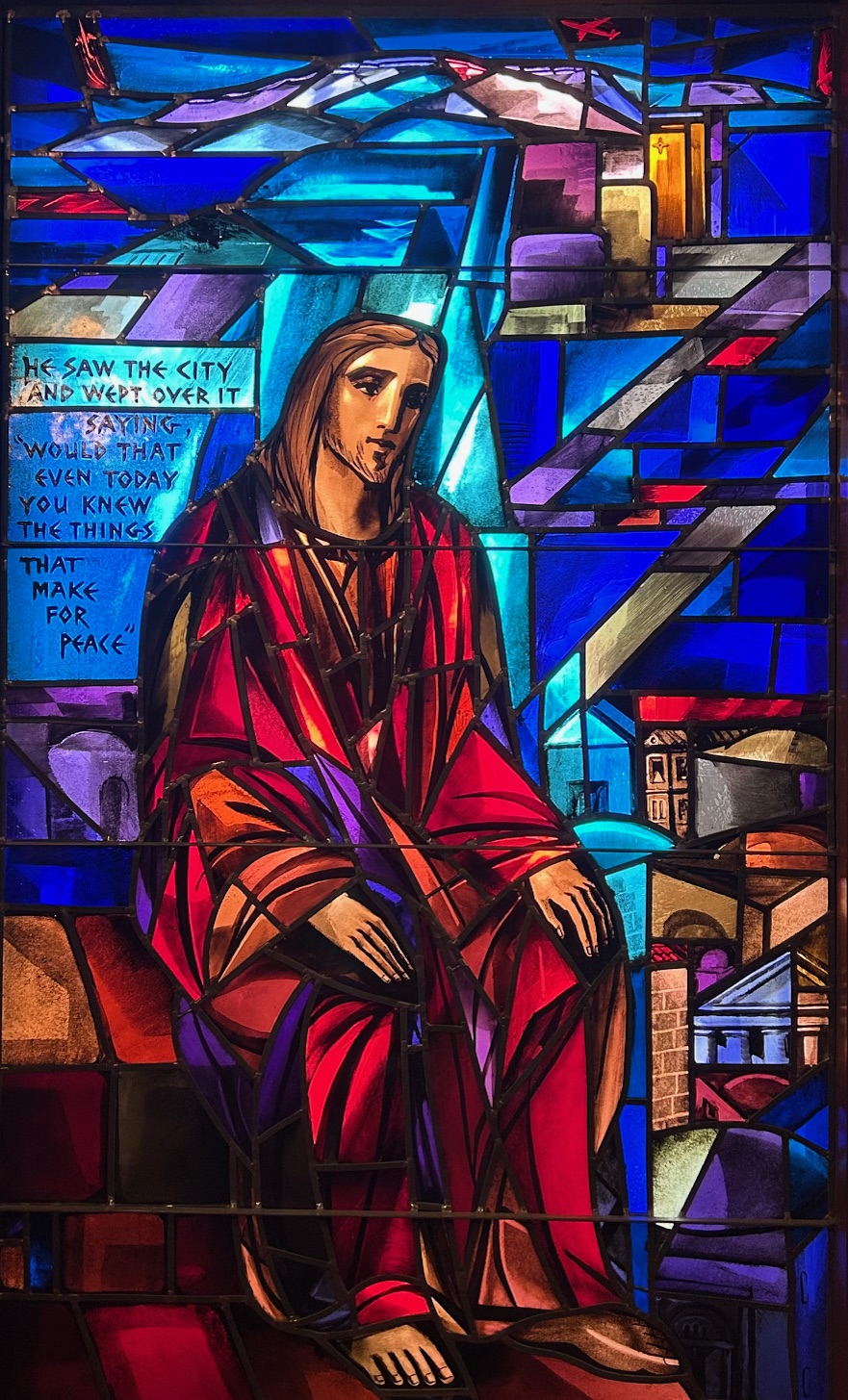
Lamentation: What Do You Lament?
I am a big fan of stained glass – specifically stained glass that is used to enhance worship spaces in cathedrals and sanctuaries across the globe. The craftsmanship, the detail, and the various styles which depict the various narratives and notions of the Christian faith are captivating to me. I particularly appreciate unique stained glass that tells a story, but only if you are paying attention to the story being told!
The stained glass shared in today’s blog is that of Jesus’ Lament referenced in Luke 13:34 but, there is something unique about this depiction – you see, the city shown is a layering of Jerusalem and Albuquerque NM, the city in which I reside. This piece of worshipful art is located in the chapel of First United Methodist Church in downtown Albuquerque, and I believe is one of the most moving and insightful pieces I have had the privilege to pay witness to. This piece of stained glass, so gently tucked away in a small chapel, reminds me that the lament story, and the love of Christ that is a never-ending and always-speaking truth.
Lament is a language of faith—an act of honesty before God when things are not as they should be. It is not a loss of hope, but a cry for justice, healing, and redemption.
In Luke 13:31-35, we find Jesus lamenting over Jerusalem:
“Jerusalem, Jerusalem, you who kill the prophets and stone those sent to you, how often I have longed to gather your children together, as a hen gathers her chicks under her wings, and you were not willing!” (Luke 13:34)
This is not just a statement; it is a lament. Jesus expresses deep sorrow for a people who resist God’s embrace. He sees their brokenness, their rejection of truth, and their unwillingness to turn toward love—and He weeps.
We all carry grief. We lament personal losses—relationships that have fractured, dreams that have crumbled, prayers that seem unanswered. We lament the state of the world—violence, injustice, suffering. Like Jesus, we see what could be and mourn what is. But lament is not despair! It is a sacred space where sorrow meets God’s presence. It is the cry of a heart that still hopes, that still longs for redemption.
Jesus’ lament over Jerusalem reminds us that lament is also an act of love. Jesus does not condemn out of anger but grieves out of compassion. Jesus’ longing is for restoration, not destruction. And that same longing extends to us.
So, what do you lament? What do you grieve and what do you long for?
Remember: Lament is not the end of the story. Just as Jesus’ tears over Jerusalem become the very soil where hope took root.
May we have the courage to lament. And may we also have the faith to believe that God is still with us as we work, gather, heal, and restore that which is within and around us.
Blessings on the journey –
Learn More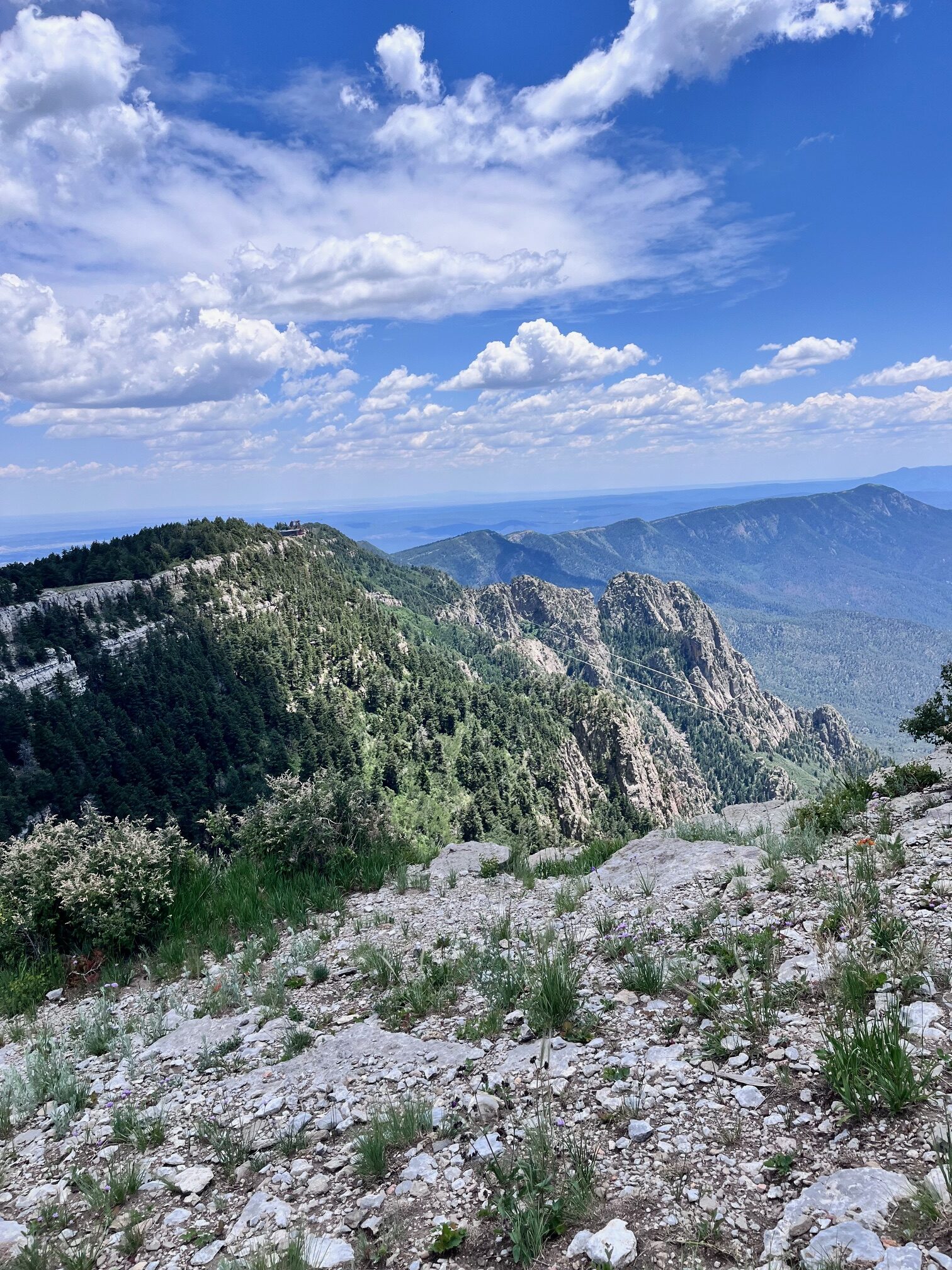
Living in the Wilderness: A Desert of Life or a Desert of Despair
The climate where I live in Albuquerque New Mexico is referred to as High Desert Climate. The high desert climate is characterized by dry and warm summers, cold winters, and low rainfall. The topography is such that the Sandia Mountain range – which at its highest point measuring 10,678 feet – circles fast parts of the city with vistas reaching into what feels like uncharted and untouched land. I once heard a visitor to the area remark, “I had no idea there were so many earth-tones and shades of red!” I personally never tire of watching the sunset over the Sandians with deep and distinctive shades of reds, yellows, and orange. This area of the country is truly what I would refer to as a wonderful and wild wilderness.
The wilderness is a place of paradox. It can be both barren and beautiful, both isolating and illuminating. In Scripture, the wilderness is often a place of testing, transformation, and divine encounter. The Israelites wandered for forty years, relying on daily manna and learning to trust God. Jesus spent forty days in the wilderness, fasting and facing temptation before stepping into his public ministry. The wilderness is never just one thing—it is both a place of struggle and a place of sacred possibility.
Many of us find ourselves in a wilderness season at some point in life. The loss of a job, the breakdown of a relationship, a season of deep uncertainty—these moments feel like wandering through a desert, unsure if we are being refined or simply lost. Is this desert a place of life, where God is shaping something new? Or is it a desert of despair, where all hope seems to dry up?
Perhaps the answer depends on where we turn our focus. In a desert of despair, all we see is what is missing—the dried-up riverbeds, the unrelenting sun, the endless horizon with no clear path. But in a desert of life, we begin to notice the unexpected graces: the small spring that emerges from a rock, the shade of a lone tree, the resilience of life that somehow finds a way to bloom.
The difference between the two is not the landscape itself, but our willingness to see the possibility within it. The wilderness can strip away illusions, but it can also make room for deeper faith.
The Israelites didn’t stay in the desert forever. Jesus emerged from the wilderness strengthened for his purpose and calling. And so, when we find ourselves in a wilderness season, we can ask: Is this a place where God is absent, or is it a place where God is waiting to meet us?
The wilderness may feel like a place of exile, but it is also where transformation happens. It can be a desert of despair, but it can also be a desert of life.
The choice is in how we walk through it.
Blessings on the journey –
Learn More
Seasons: Ashes and Lent
It’s that time of year in the rhythm and ritual of the Christian Calander– 40-days; not counting Sunday’s – in which we prepare our hearts and minds for a season of introspection and remembrance. The time when we feast on King’s Cake and pancakes, plan for fish on Friday’s, and mark our days with considerations of giving up and taking up. I personally look forward to the celebrations leading up to the beginning of the season of Lent, the solemn service of Ash Wednesday, and tuna sub’s every Friday from a local pizza-sub-salad place down the street from my house. I enjoy finding a Lenten daily devotional that both challenges and inspires me. I truly find this to be the most impactful season of the year for both my faith and my personal growth.
Seasons shape our lives. They remind us of the passage of time, the rhythm of change, and the invitation to reflect. In the Church, the season of Lent stands as a sacred pause—a time to journey inward, confront our mortality, and embrace the call to renewal.
Lent begins with ashes. This Wednesday, on Ash Wednesday, we receive the sign of the cross in dust and hear the sobering words: Remember that you are dust, and to dust you shall return (I add: Go and serve our God). These ashes, a symbol of both mortality and repentance, connect us to the ancient practice of lament and longing. They remind us that life is fragile, fleeting, and yet deeply meaningful.
In many ways, Lent mirrors the changing seasons in nature. Just as winter strips the trees bare, Lent calls us to let go—of distractions, of excess, of anything that keeps us from drawing closer to God. It is a season of pruning, of surrender, and of making space for something new to take root.
Know this, Lent is not just about loss; it is about contemplation and transformation. It is about preparing the soil of our souls for resurrection and ascension. Through prayer, fasting, and acts of service, we cultivate a spirit of renewal. We step into the wilderness, trusting that even in barren places, God is at work.
As we journey through Lent, we may find ourselves carrying burdens—grief, doubt, weariness, unhelpful habits. The beauty of this season is that it does not ask us to ignore these struggles but to bring them before God, to name them, and to trust that healing is possible. The ashes we wear are not just a sign of death; they are a promise that even dust can be redeemed.
Spring follows winter. Easter follows Lent. Hope rises from the ashes. This is the rhythm of the Gospel—the promise that life is always being made new.
So, in this season of ashes and Lent, may we embrace the invitation to pause, to reflect, and to prepare our hearts for the resurrection yet to come.
Blessings on the journey –
Learn More

